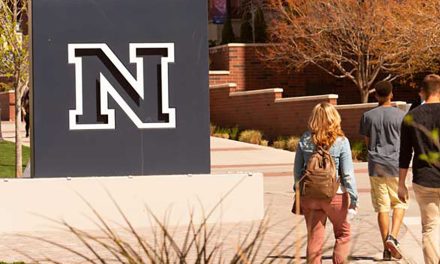
50 Years Ago | Hopis arrest Navajo rancher, sparking range war fears
The thing that Navajo Tribal Chairman Peter MacDonald feared would happen did the last week of May in 1972 – the Hopi Tribe arrested a Navajo rancher and charged him with trespass.
MacDonald’s counterpart in the Hopi Tribe, Clarence Hamilton, had been threatening to take that action for the past month so it should not have come as a surprise to Navajo leaders.
But MacDonald was worried that if the Hopis actually arrested a Navajo, it would heighten the tension between the two tribes and create the possibility of violence.
What we in the press were told was that non-Indian rangers working for the Hopis arrested a Navajo named Sam Maize and confiscated some 200 sheep that allegedly wandered onto the Hopi Reservation during the night.
According to one report, Maize, upon learning that his sheep had wandered onto Hopi land, was driving them back to home when he was arrested.
He was charged with trespassing which carries a sentence of up to six months in jail. He was released on bond but Hopi rangers impounded his sheep until a fee was paid to get them out.
MacDonald said he found the actions by “so-called Hopi leaders” to be “appalling” and arrest was done by the Hopi Tribe for the sole purpose of forcing Congress or the courts to take steps to resolve the dispute between the two tribes.
MacDonald asked Navajo residents to stay patient and allow the tribes to work out a solution. He also pointed out that the two tribes had lived in harmony with each other for centuries and urged them to keep the peace.
I had a chance to talk to Hamilton a day or two after MacDonald released his statement. Like MacDonald, he urged members of both tribes to keep the peace and not to do anything rash.
But he also emphasized that any Navajo livestock and rancher that comes onto the Hopi Reservation without permission will face impoundment and arrest.
What is happening with Indian center?
What’s going to happen to the Gallup Indian Center now that it’s director, Herb Blatchford Sr., was placed on suspension and the center’s board is taking a long look at the direction the center will take in the future?
I talked to Sandy Shock, a Gallup photographer who served on the center’s board in the early years. He said that when the center was first opened, its function as to provide space for agencies that served the Indian community.
This included medical and welfare offices. It was becoming a one-stop location for Indians who needed federal or state assistance.
But within a few years, the Indian Health Service built a hospital and the state and federal government built their own facility a block from the center. So by the time Blatchford came in as director, its function had changed to a place Indians could meet friends when they came to town and rest before they made the long trip back home. The facility also had showers.
But, according to Shock, the center began getting in the middle of controversial actions that appeared to put the center’s staff against the city of Gallup.
A good example was the involvement of the center in the 1964 Gallup police action.
The police department had come under fire for massive jail overcrowding especially on weekends when drunks picked up on the streets were thrown into piles in cells meant for two prisoners.
A local attorney named William Stripp filed lawsuit claiming that arresting street people for being drunk was outlawed by the courts as treating alcohol abuse as a crime instead of a social problem.
The city decided to settle the dispute by refusing to pick up anyone for being drunk on the streets, which created major problems since the nights were cold and there was a risk of exposure deaths.
Blatchford decided to open the center for people to sleep at night and for two weeks, the center was filled 24 hours a day. Eventually, the city agreed to allow police to pick up drunks for safety and release them in the morning.
Then in the late 1960s, the center became a meeting place, according to Gallup officials, for groups that demonstrated against the city and the Gallup Ceremonial.
This led to a movement by city representatives on the board to pass a resolution placing Blatchford on suspension while an investigation was done on how he was running the center.
That investigation was scheduled to be completed by the middle of June. Surprisingly here was no major demonstration demanding the city put Blatchford back in as director.
Blatchford had made no effort to get his job back, saying he was recuperating from a bad car accident.
But the fight over Blatchford would have serious consequences for the city’s mayor, Frankie Garcia, who was the leading force on the center’s board to place Blatchford on suspension.
Garcia, for the first time, came under attack by Blatchford’s supporters who began criticizing him for his ownership stock in the Navajo Inn, a notorious package liquor store located in Tse Bonito near the reservation border.
These protests became even stronger when New Mexico Gov. Bruce King decided to name Garcia as a member of the board of directors for the University of New Mexico.
This, of course, led to Garcia’s kidnapping in 1973 by Larry Casuse and Robert Nakadinae, two Navajo students at the university.
Casuse was shot by police that day and Nakaidinae served a short stint in jail.








 Highway 264,
Highway 264, I-40, WB @ Winslow
I-40, WB @ Winslow